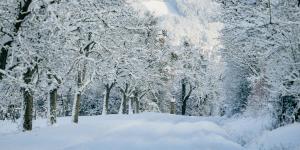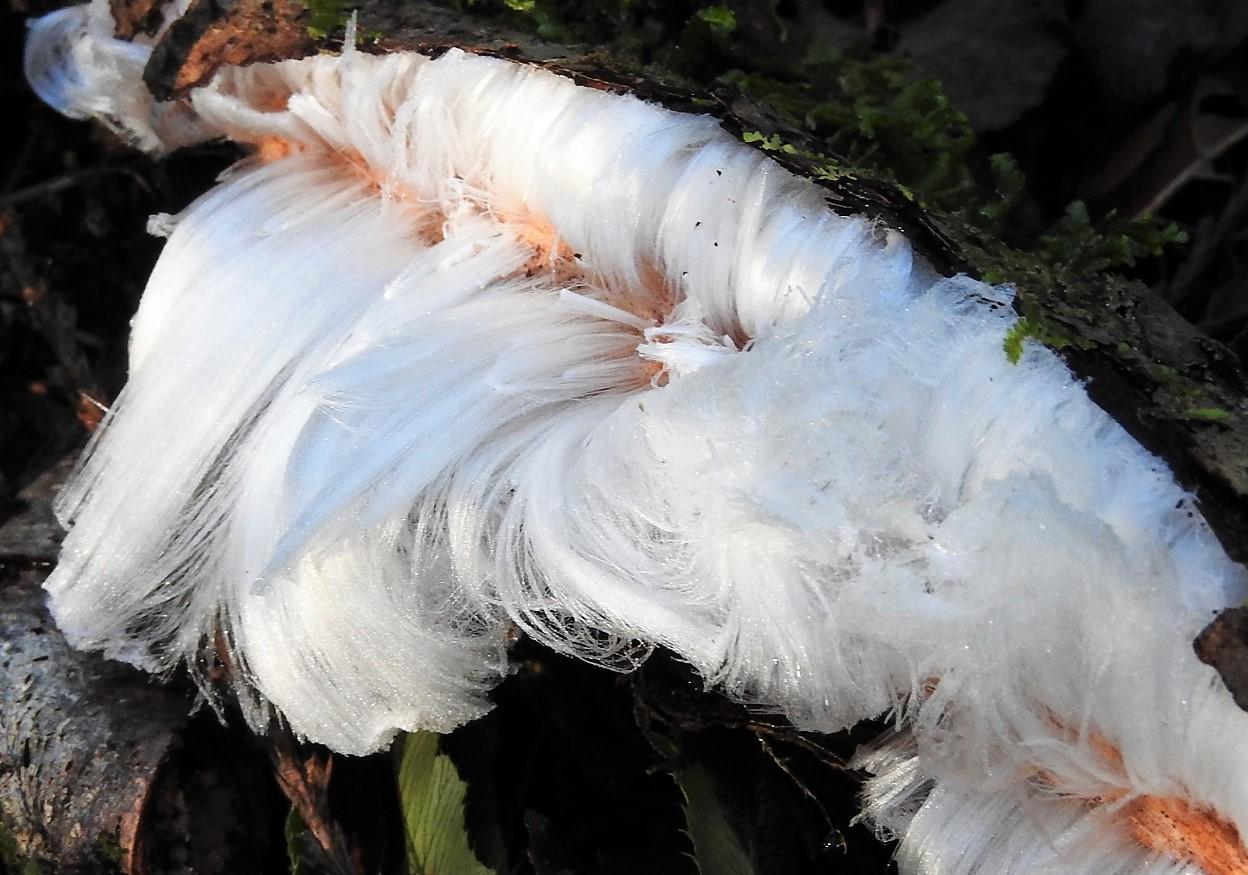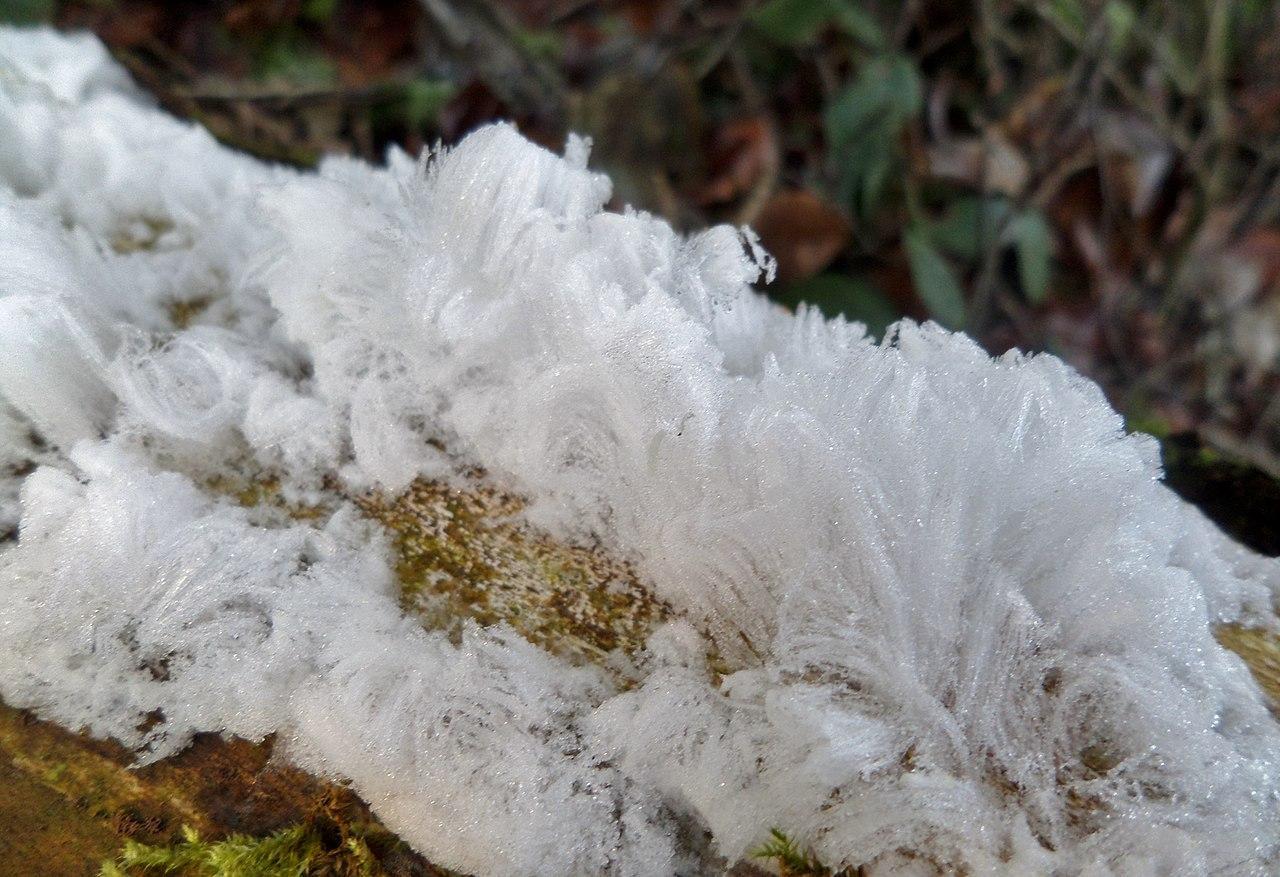What Is Hair Ice? - Hair Ice Fungus

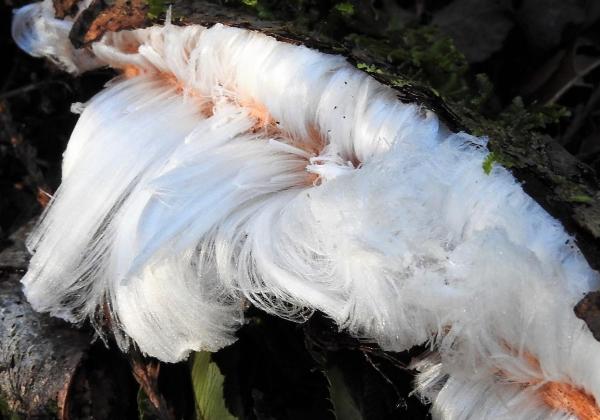
Hair ice refers to a rare natural phenomenon that occurs when thin threads of ice resembling hair grow from certain types of moist, decaying wood in freezing temperatures. Hair ices were not always fully understood, and their formation was a mystery for many years. Ice hairs were first observed and documented by naturalists and scientists in the 1800s, but were not fully understood until the late 20th century.
The following thedailyECO article explains what hair ice is and how and why they form.
What is hair ice?
Hair ice, also known as ice wool or frost beard, is a type of ice consisting of fine hairs about 0.01 mm in diameter that can be up to 20 centimeters long and form dense, unbranched tufts.
In the past, some people believed that ice hair was formed by supernatural or magical forces, leading to various myths and legends about this natural phenomenon. However, in the 20th century, scientists were able to study ice hair more closely and determined that its formation is actually a physical process resulting from the interaction of moisture, temperature, and humidity in the environment.
Hair ice has been documented in Northern Hemisphere countries (at latitudes between 45 and 55 degrees north) such as Germany, Great Britain, France, Ireland, Switzerland, Sweden, the Netherlands, the United States, Russia, and Slovenia. Hair ice is often found in forests or wooded areas in winter when the temperature is below freezing, and the air is humid.
Three specific environmental conditions are required for hair ice to form. These are:
- The wood must be in a state of decay, which means that the cell walls of the wood are breaking down and releasing moisture.
- The temperature must be below freezing, typically around -5 to -10 degrees Celsius (23 to 14 degrees Fahrenheit).
- There must be enough humidity in the air for the moisture from the decaying wood to freeze in thin, delicate filaments.
When these conditions are met, the moisture from the decaying wood is drawn out and freezes on contact with the cold air, creating thin, delicate strands of ice that resemble hair. The resulting ice hair can be a beautiful and delicate natural sculpture, but it is also fragile and can melt quickly when exposed to sunlight or warmer temperatures.
Why does hair ice form?
As we saw in the previous section, ice hair is a phenomenon that occurs when certain environmental conditions are present, such as humidity, temperature, and rotten wood. However, this did not explain why this phenomenon occurred in some trees and not others, or why it was not a more common phenomenon.
In recent studies, it was discovered that the formation of hair ice was related to the activity of a fungus that grows in winter, Exidiopsis effuse. Although other associated fungal species were found, E. effusa was the one that predominated in all samples.
Research has shown that this particular species of fungus is present in the wood where the hair ice forms, and that the fungus plays an essential role in this process. It is believed that the fungus helps to create the conditions necessary for the formation of hair ice. It does this by providing a structure for the ice to grow on, and by facilitating the movement of water from inside the wood to the outside, where it can freeze and form the delicate hair-like strands.
Scientists are still studying the relationship between the fungus and the hair ice, and there is still much to learn about the mechanisms that drive this fascinating natural phenomenon. However, it is clear that the presence of the fungus Exidiopsis effusa is a critical factor in the formation of hair ice.
You may also be interested in this other article where we explain what sea ice is, definition, formation, and examples.
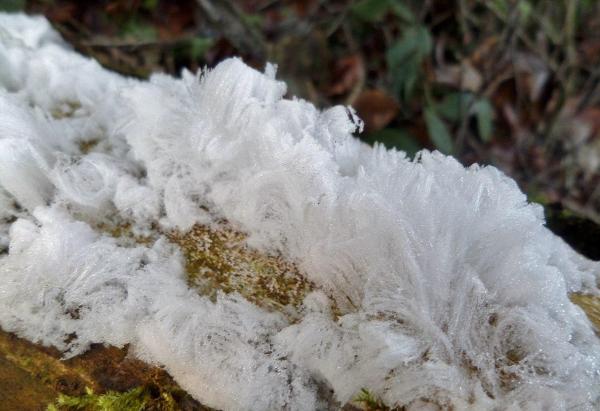
How does hair ice form?
Hair ice is formed through a process called ice segregation, which occurs when water in a porous material freezes and expands.
- The process of hair ice formation starts with the presence of moisture in rotting wood. The moisture comes from the breakdown of cell walls in the wood caused by fungi.
- The temperature must be below freezing (typically around -5 to -10 degrees Celsius) to form ice.
- Water in the pores of the wood freezes and expands, creating pressure.
- A specific type of fungus called Exidiopsis effusa is present in the rotting wood and creates thin, hair-like channels or tubes in the wood. These tubes provide a path for the water to escape.
- The pressure created by the freezing water forces water out of the channels created by the fungus.
- When the water escapes through the channels created by the fungus, it immediately freezes in the cold air, forming thin, delicate filaments that resemble hair.
- As more water freezes and more hair filaments are formed, the hair ice grows and creates a beautiful and intricate structure.
Overall, hair ice formation is a rare and fascinating natural phenomenon that requires specific conditions, including the presence of the Exidiopsis effusa fungus, freezing temperatures, and moisture from rotting wood.
You might also be interested in this other article, where we explain what are icebergs and how are they formed.
If you want to read similar articles to What Is Hair Ice? - Hair Ice Fungus, we recommend you visit our Facts about nature category.
- Hofmann, D., Preuss, G., and Mätzler, C. (2015). Evidence for biological shaping of hair ice . Available at: https://bg.copernicus.org/articles/12/4261/2015/bg-12-4261-2015.pdf
- Nemo, L. (2022). " Ice hair ". Available at: https://www.investigacionyciencia.es/files/63759.pdf
- Palomar, T.J. (2004). Gelatinous Fungi (Exidiopsis, Tremella and Dacrymyces) that decompose the dead wood of Cistus, in Catalonia .

